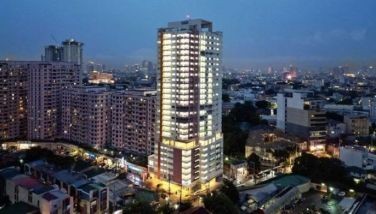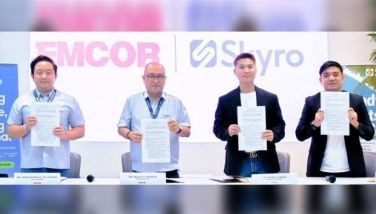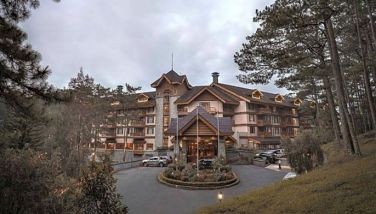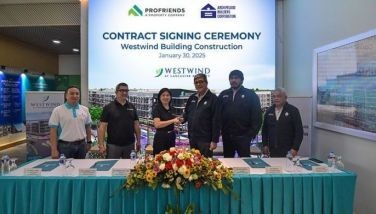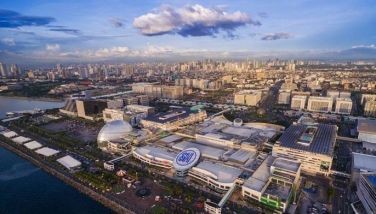Tartanilla fares in 1945
When the Japanese Imperial Army surrendered and Philippine democracy restored, the Municipal Board of Cebu City enacted an ordinance regulating the fares of the tartanilla.
The mode of transportation then was tartanilla and the Cebu City councilors found it wise to regulate the fares. Cebu City Ordinance No. 2 enacted on July 12, 1945 was entitled "An Ordinance Providing for Tariff or Schedule of Rates for Tartanillas Operated for Public Use." The ordinance provided that the fare within city limits be P0.10 centavos while the fare beyond city limits be P0.10 centavos plus P0.05 for every additional kilometer.
There is also a tariff on fares by the hour. It was P0.60 centavos for the first 30 minutes or less. If over 30 minutes but not more than one hour, it was P1.00 and for every additional hour or fraction thereof was P0.75 centavos.
City Limits meant that it was the area of Cebu City comprised within and bounded by Carlock, Tres de Abril, Mango Avenue (now Gen. Arcadio Maxilom Avenue), and Martires Street (now M.J. Cuenco Avenue) and the sea.
Passengers using rigs (tartanilla) beyond the city limits shall pay more than P0.10 centavos. The ordinance also provided that every cochero or tartanilla driver shall post the tariff in a conspicuous place in the tartanilla.
Notably, just like today on the law on public transportation, the ordinance provided that no cochero shall refuse to conduct any passenger to his place of destination.
The ordinance was not just a piece of paper to be ignored, it provided a penal provision, mandating that any person or entity, whether an association or corporation, who charges and/or causes to be charged fees in excess of the tariff or schedule shall be subject to a fine of not more than TWO HUNDRED PESOS or imprisonment not exceeding SIX MONTHS or both fines and imprisonment at the discretion of the court.
The presiding officer of the Municipal Board that enacted the ordinance was its president (today's vice mayor), Honorato S. Hermosisima, the first lawyer of Sibonga, Cebu. Honorato was admitted to the Bar on December 19, 1931. A son and namesake, Honorato Jr. became a lawyer on June 10, 1975.
The members of the Municipal Board were Atty. Cecilio dela Victoria, admitted to the Bar on February 23, 1926 (father of retired City Fiscal and Regional Trial Court Judge Loreto Dalton dela Victoria. The latter became a lawyer on February 28, 1958, his younger brother, Rafael, also became a lawyer on March 19, 1965 and served Cebu as one of the ablest trial lawyers of the Public Attorney's Office. A nephew of Cecilio, Isaac Bacalso dela Victoria also became a lawyer on January 20, 1955 and became the first regional director of the Citizens Legal Assistance Office or CLAO, Region 7, to what is now known as the PAO).
Florencio S. Urot (also a lawyer, admitted on October 27, 1930, became Cebu City mayor from September 13, 1971 to December 31, 1971). Numeriano G. Estenzo (also a lawyer, admitted to the Bar on November 18, 1935), served the country as judge of the Court of First Instance). The Nemenzo clan also produced brilliant lawyers, namely, Baldomero C. Estenzo of Catmon, Cebu became a lawyer on March 13, 1959, became legal counsel and executive of San Miguel Corporation and now Dean of the University of Cebu College of Law and has produced bar topnotchers. Ulyssess R. Estenzo also of Catmon, Cebu became a lawyer on March 10, 1964 and Gloria C. Estenzo-Ramos was admitted to the Bar on May 13, 1980, a foremost advocate on environmental protection and a law professor.
The other members were Eugenio G. Corro, admitted to the Bar on January 8, 1940 -- a street in Cebu City is named after him. Other notable members of the Corro clan are Atty. Liza D. Corro of Daanbantayan, who was admitted to the Bar on January 8, 1987. The present mayor is her brother. She is presently the Dean of the U.P. Cebu Campus. Mariano Y. Corro of Daanbantayan also became a lawyer on January 21, 1955 and Rogelio R. Corro was admitted on March 21, 1967. Mayor Paz Radaza of Lapu-Lapu City is a sister of Dean Liza Corro.
The rest of the honorable members of the Municipal Board were Canuto O. Borromeo, Alfonso S. Frias, and Miguel Sanson (also a lawyer). The Cebu City mayor at that time was Leandro Tojong, a famous Doctor of Medicine and Surgeon. Dr. Tojong was a captain of the Philippine Army during World War II. Dr. Tojong after serving Cebu City as mayor was elected Member of the old fifth congressional district of Cebu in 1946.
- Latest







